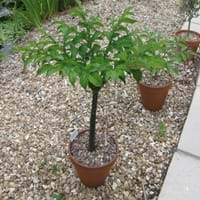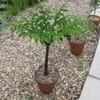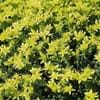Life Span
Perennial
Annual
Origin
Northeastern United States, Mid-Atlantic United States, Southeastern United States, Central United States, Canada
Europe, Asia
Types
Not available
Admiral Pepper,Bell Pepper,Mohawk Pepper,Yolo Wonder Pepper
Number of Varieties
Not Available
Habitat
Mountain Slopes, subtropical regions, Tropical Climate, Warmer regions
Cropland, Oil fields, Waste areas
USDA Hardiness Zone
4-9
4-9
AHS Heat Zone
9-1
Not Available
Sunset Zone
Not Available
Not Available
Habit
Clump-Forming
Clump-Forming
Flower Color
Yellow, Orange
White
Flower Color Modifier
Not Available
Not Available
Fruit Color
Not Available
Green, Tan
Leaf Color in Spring
Green
Green
Leaf Color in Summer
Green
Not Available
Leaf Color in Fall
Green
Green
Leaf Color in Winter
Green, Purple
Green
Leaf Shape
bipinnate
Egg-shaped
Plant Season
Spring, Summer, Fall
Not Available
Sunlight
Full Sun, Partial Sun, Partial shade
Full Sun, Partial Sun
Growth Rate
Fast
Very Fast
Type of Soil
Loam, Sand
Clay, Loam, Sand
The pH of Soil
Acidic, Neutral, Alkaline
Acidic, Neutral, Alkaline
Soil Drainage
Well drained
Well drained
Bloom Time
Spring, Late Spring, Early Summer, Summer
Early Spring, Spring, Late Spring, Late Fall, Early Winter, Winter, Late Winter
Tolerances
Drought, Salt
Pollution
Where to Plant?
Container, Ground, Pot
Ground, Pot
How to Plant?
Seedlings, Tuber propagation, Tubers
Stem Planting, Transplanting
Plant Maintenance
Medium
Medium
Watering Requirements
Requires plenty of water during the growing season, Requires regular watering
Prefer drip-irrigation instead of Over-head watering, Water Deeply
In Summer
Lots of watering
Lots of watering
In Spring
Moderate
Moderate
In Winter
Average Water
Average Water
Soil pH
Acidic, Neutral, Alkaline
Acidic, Neutral, Alkaline
Soil Type
Loam, Sand
Clay, Loam, Sand
Soil Drainage Capacity
Well drained
Well drained
Sun Exposure
Full Sun, Partial Sun, Partial shade
Full Sun, Partial Sun
Pruning
Remove damaged leaves, Remove dead branches, Remove dead leaves
Prune ocassionally, Prune to control growth
Fertilizers
All-Purpose Liquid Fertilizer
All-Purpose Liquid Fertilizer
Pests and Diseases
Aphids, Birds
Not Available
Plant Tolerance
Drought
Drought
Flowers
Showy
Insignificant
Flower Petal Number
Single
Single
Foliage Texture
Bold
Fine
Foliage Sheen
Matte
Not Available
Attracts
Birds
Not Available
Allergy
Diarrhea, Excessive flatus, gastro-intestinal problems
Not Available
Aesthetic Uses
Not Used For Aesthetic Purpose
Not Used For Aesthetic Purpose
Beauty Benefits
Not Available
Not Available
Environmental Uses
Air purification
Air purification
Medicinal Uses
Boils, bowel syndrome, cholesterol-lowering, Colic, Digestive, Fiber, Low calories, Piles, Stimulates new cell growth, Weight management and satiety
Not Available
Part of Plant Used
Corms, Fibre, Root, Seeds, Tuber
Not Available
Other Uses
Traditional medicine, Used like flour
Unknown
Used As Indoor Plant
No
No
Used As Outdoor Plant
Yes
Yes
Garden Design
Container, Edible, Feature Plant, Groundcover, Mixed Border, Rock Garden, Wall, Wildflower
Not Available
Botanical Name
OPUNTIA humifusa
CARDAMINE hirsuta
Common Name
voodoo lily, snake palm, elephant yam
Hairy Bittercress
In Hindi
Konjac
बालों वाली Bittercress
In German
Teufelszunge
Hairy Bittercress
In French
Amorphophallus konjac
Bittercress Poilu
In Spanish
Amorphophallus konjac
Bittercress Peludo
In Greek
Konjac
τριχωτές Bittercress
In Portuguese
Amorphophallus konjac
Bittercress cabeludo
In Polish
konjac
włochaty Bittercress
In Latin
Konjac
pilosus bittercress
Phylum
Tracheophyta
Magnoliophyta
Class
Magnoliopsida
Magnoliopsida
Order
Alismatales
Brassicales
Family
Araceae
Brassicaceae
Genus
Amorphophallus
Cardamine
Clade
Angiosperms, Monocots
Not Available
Tribe
Thomsonieae
Not Available
Subfamily
Aroideae
Not Available
Number of Species
Not Available
Not Available
Properties of Devil's Tongue and Hairy Bittercress
Wondering what are the properties of Devil's Tongue and Hairy Bittercress? We provide you with everything About Devil's Tongue and Hairy Bittercress. Devil's Tongue has thorns and Hairy Bittercress doesn't have thorns. Also Devil's Tongue does not have fragrant flowers. Devil's Tongue has allergic reactions like Diarrhea, Excessive flatus and gastro-intestinal problems and Hairy Bittercress has allergic reactions like Diarrhea, Excessive flatus and gastro-intestinal problems. Compare all the properties and characteristics of these two plants. Find out which of these plant can be used as indoor plant. If you are interested to decorate your house and garden, find out aesthetic uses, compare them and select the plant which will beautify your surrounding. Along with beautification, try comparing medicinal and edible uses of Devil's Tongue and Hairy Bittercress and you can choose the plant having best and most benefits.
Season and Care of Devil's Tongue and Hairy Bittercress
Season and care of Devil's Tongue and Hairy Bittercress is important to know. While considering everything about Devil's Tongue and Hairy Bittercress Care, growing season is an essential factor. Devil's Tongue season is Spring, Summer and Fall and Hairy Bittercress season is Spring, Summer and Fall. The type of soil for Devil's Tongue is Loam, Sand and for Hairy Bittercress is Clay, Loam, Sand while the PH of soil for Devil's Tongue is Acidic, Neutral, Alkaline and for Hairy Bittercress is Acidic, Neutral, Alkaline.
Devil's Tongue and Hairy Bittercress Physical Information
Devil's Tongue and Hairy Bittercress physical information is very important for comparison. Devil's Tongue height is 10.20 cm and width 30.00 cm whereas Hairy Bittercress height is 10.20 cm and width 5.10 cm. The color specification of Devil's Tongue and Hairy Bittercress are as follows:
Devil's Tongue flower color: Yellow and Orange
Devil's Tongue leaf color: Green
Hairy Bittercress flower color: White
- Hairy Bittercress leaf color: Green
Care of Devil's Tongue and Hairy Bittercress
Care of Devil's Tongue and Hairy Bittercress include pruning, fertilizers, watering etc. Devil's Tongue pruning is done Remove damaged leaves, Remove dead branches and Remove dead leaves and Hairy Bittercress pruning is done Prune ocassionally and Prune to control growth. In summer Devil's Tongue needs Lots of watering and in winter, it needs Average Water. Whereas, in summer Hairy Bittercress needs Lots of watering and in winter, it needs Average Water.





